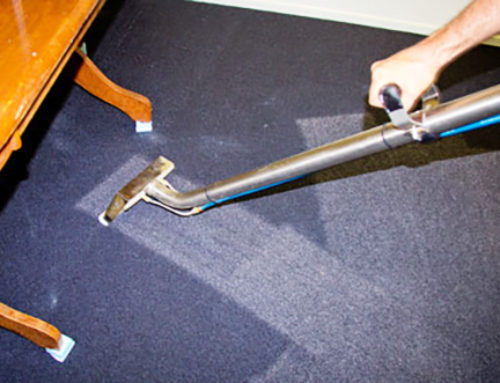Today’s author with https://scrubbroscarpetcleaningreno.com/ shall discuss carpet steam cleaning for Reno Carpets.
Steam cleaning can be effective for homes in Reno, Nevada, but whether it is the best solution depends on several factors, including the climate, the type of carpet, and the specific cleaning needs of the home.
Below are the pros and cons of carpet steam cleaning in Reno, as well as considerations to help determine if it’s the right choice for your home.
Pros of Carpet Steam Cleaning for Reno Homes
- Deep Cleaning Power
- Effective Removal of Dirt, Dust, and Allergens: Carpet steam cleaning, also known as hot water extraction, uses high-pressure hot water to break down dirt, dust, and allergens that have settled deep into the carpet fibers. In Reno’s dusty, dry climate, where dust and pollen can accumulate quickly, steam cleaning can help remove these particles and improve indoor air quality.
- Allergen Removal: This method can be particularly beneficial for people with allergies, as steam cleaning can eliminate allergens such as pet dander, dust mites, and pollen, which are common in dry climates like Reno’s.
- Stain Removal
- Steam cleaning is highly effective for removing stubborn stains like food, beverages, pet accidents, or mud. Given Reno’s dusty environment, steam cleaning can help lift deep-set dirt and stains that may otherwise be difficult to remove with other methods.
- Disinfection and Odor Removal
- The heat used in steam cleaning can also help disinfect carpets, killing germs, bacteria, and mold spores, which can be a concern in areas with fluctuating humidity levels like Reno. Additionally, steam cleaning can remove odors trapped in carpet fibers, such as pet smells or mustiness.
- Long-Term Carpet Maintenance
- Regular steam cleaning can extend the life of your carpet by preventing dirt from accumulating and wearing down the fibers. This is particularly important in areas with high foot traffic or where dust and dirt build up quickly, as can be the case in Reno.
Cons of Carpet Steam Cleaning for Reno Homes
- Drying Time
- One of the main drawbacks of steam cleaning is the drying time. Since steam cleaning involves the use of hot water, carpets can take 6 to 12 hours (or more) to dry, depending on factors like the humidity and ventilation in your home. Reno’s dry climate can be helpful in this regard, as the arid air can speed up the drying process. However, during colder months when indoor humidity is lower, drying times might still be extended, and carpets may remain damp for longer than ideal.
- Risk of Mold or Mildew: If the carpet takes too long to dry, there’s a risk of mold or mildew growth, especially if moisture is trapped in the carpet pad or the room has poor airflow. This is a concern in areas with low humidity but can be mitigated with proper ventilation and airflow.
- Excess Moisture in Dry Climates
- While Reno’s dry climate can help carpets dry faster, it also means that carpets in this area may not need heavy moisture for cleaning. Steam cleaning involves using significant water, which may not always be necessary for routine maintenance in a dust-heavy environment. Other low-moisture cleaning methods (like encapsulation or dry cleaning) may be more suitable for maintaining carpets in Reno without using excess water.
- Potential Damage to Carpet Fibers
- Overuse of steam cleaning can potentially cause damage to certain types of carpets. Delicate carpets, especially those made from wool, silk, or other natural fibers, can be more susceptible to shrinkage, fading, or fiber breakdown when exposed to high heat and moisture. It’s important to ensure that steam cleaning is appropriate for the specific type of carpet in your home.
- Hard Water Residue
- Reno’s water supply can be hard water, which means it contains a high concentration of minerals like calcium and magnesium. If not properly filtered or softened, hard water can leave mineral deposits on carpets after steam cleaning. This residue can cause carpets to look dull or feel sticky, requiring additional cleaning or specialized treatments to remove.
Considerations for Steam Cleaning in Reno
- Type of Carpet: Consider the material of your carpet. Steam cleaning is generally effective for synthetic carpets (like nylon, polyester, or olefin) that can withstand the moisture and heat. However, for natural fiber carpets (like wool), a gentler method may be needed to avoid damage.
- Frequency of Cleaning: Due to Reno’s dry conditions and dust accumulation, you may need to clean your carpets more frequently than in more humid climates. Steam cleaning can be used effectively for deep cleaning once every 6 to 12 months, but more frequent maintenance cleaning (such as vacuuming or dry cleaning) may be sufficient in between steam cleanings.
- Alternative Methods: If you’re concerned about moisture or drying time, consider using low-moisture cleaning methods or dry carpet cleaning techniques that still provide a thorough clean but with much faster drying times. Methods like encapsulation or bonnet cleaning may be more practical for homes in Reno, where you want to minimize water usage.
- Professional Steam Cleaners: If you do choose to use steam cleaning, it’s best to hire a professional carpet cleaning service that is experienced in handling Reno’s dry climate and can adjust their cleaning method to suit your carpet’s needs. They may use water-softening systems and high-power extraction equipment to minimize moisture and ensure a quick dry time.
Conclusion
While carpet steam cleaning can be a good solution for Reno, Nevada, homes, it’s not always the best choice for everyone. The dry climate in Reno can make steam cleaning effective for deep cleaning and allergen removal, but the moisture involved can lead to longer drying times, potential mold risks, and hard water residue. It’s important to assess your carpet type, the level of soil and allergens, and the need for moisture before deciding on steam cleaning. In some cases, low-moisture or dry-cleaning methods might be better suited for the region’s unique environmental conditions.




Leave A Comment